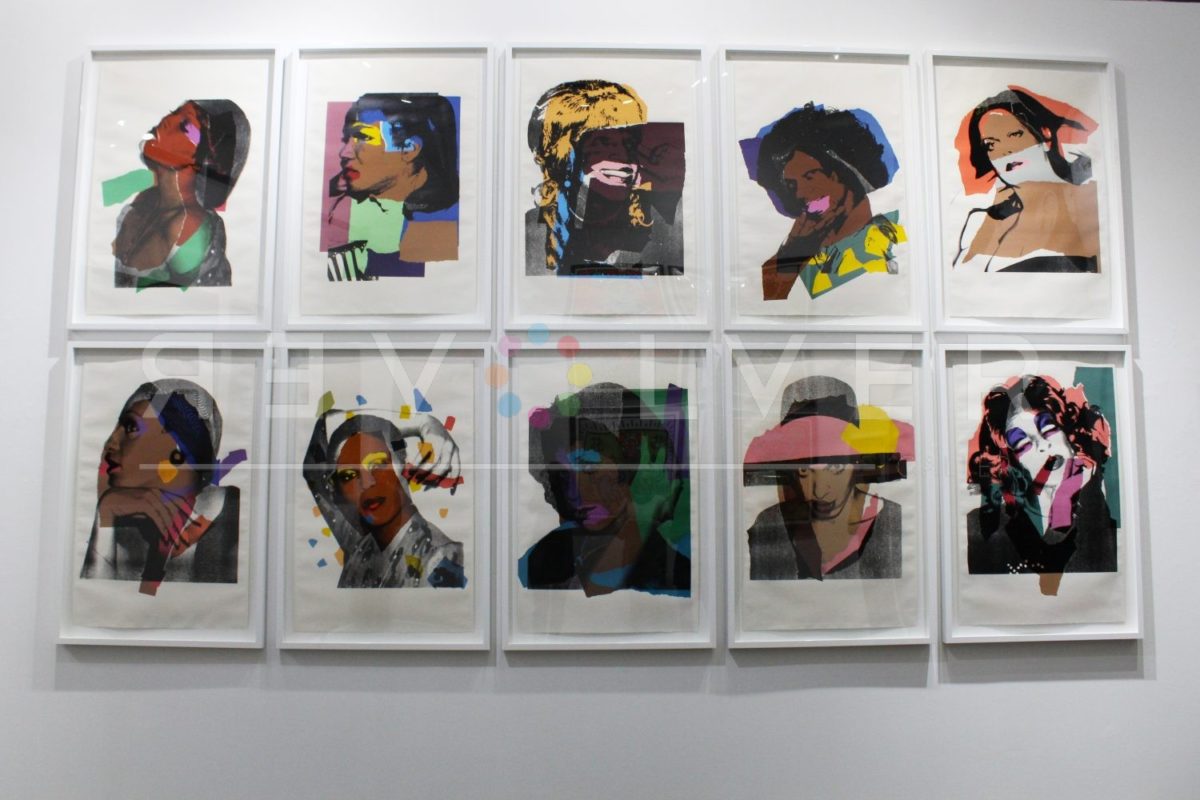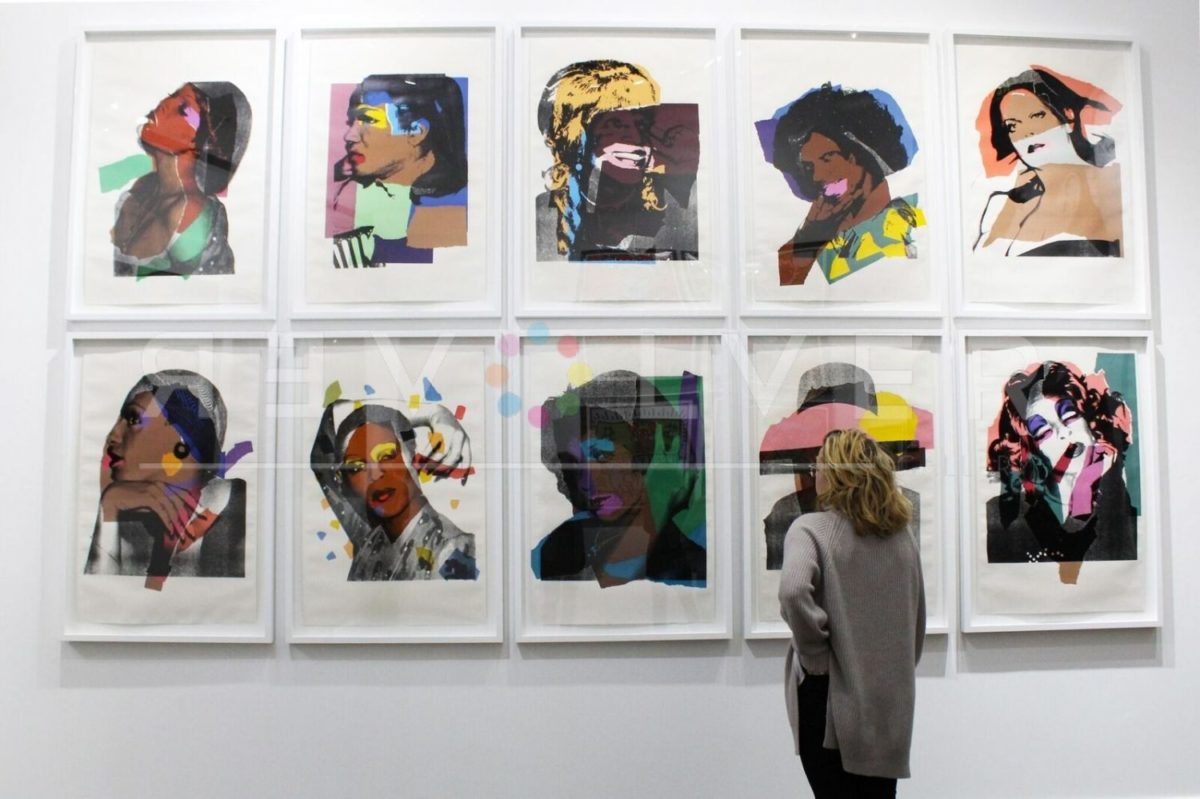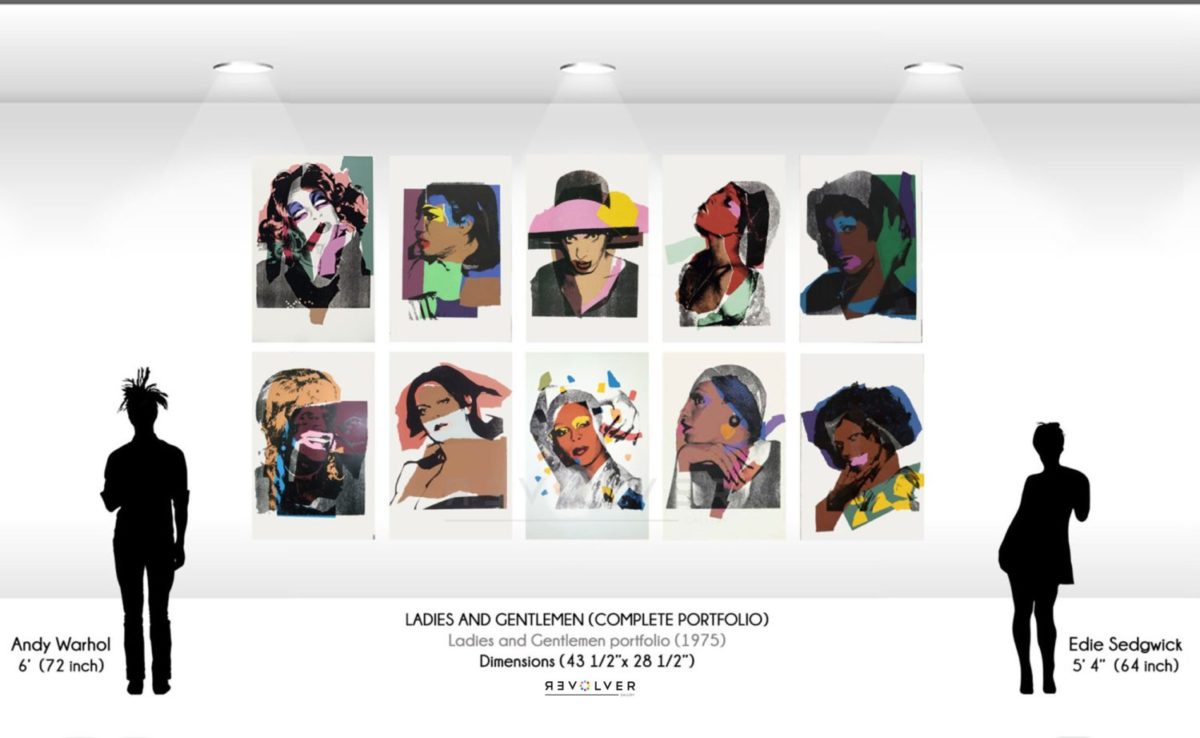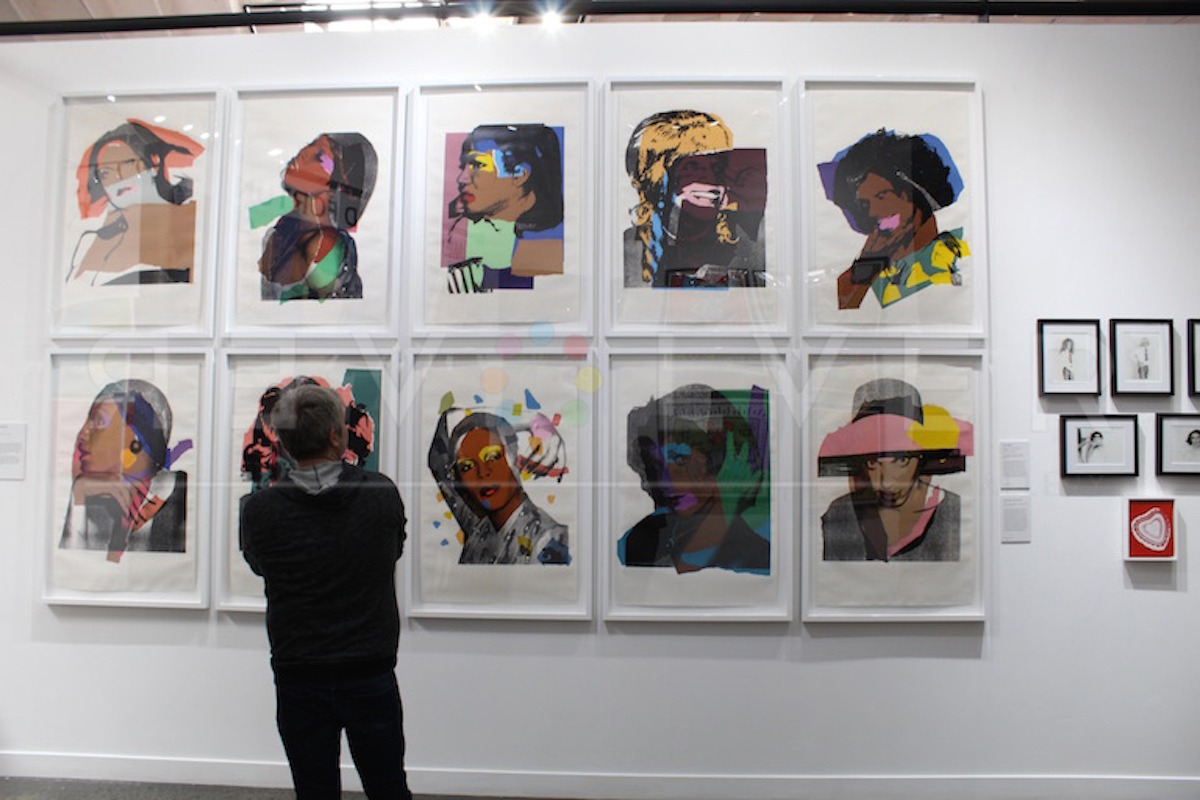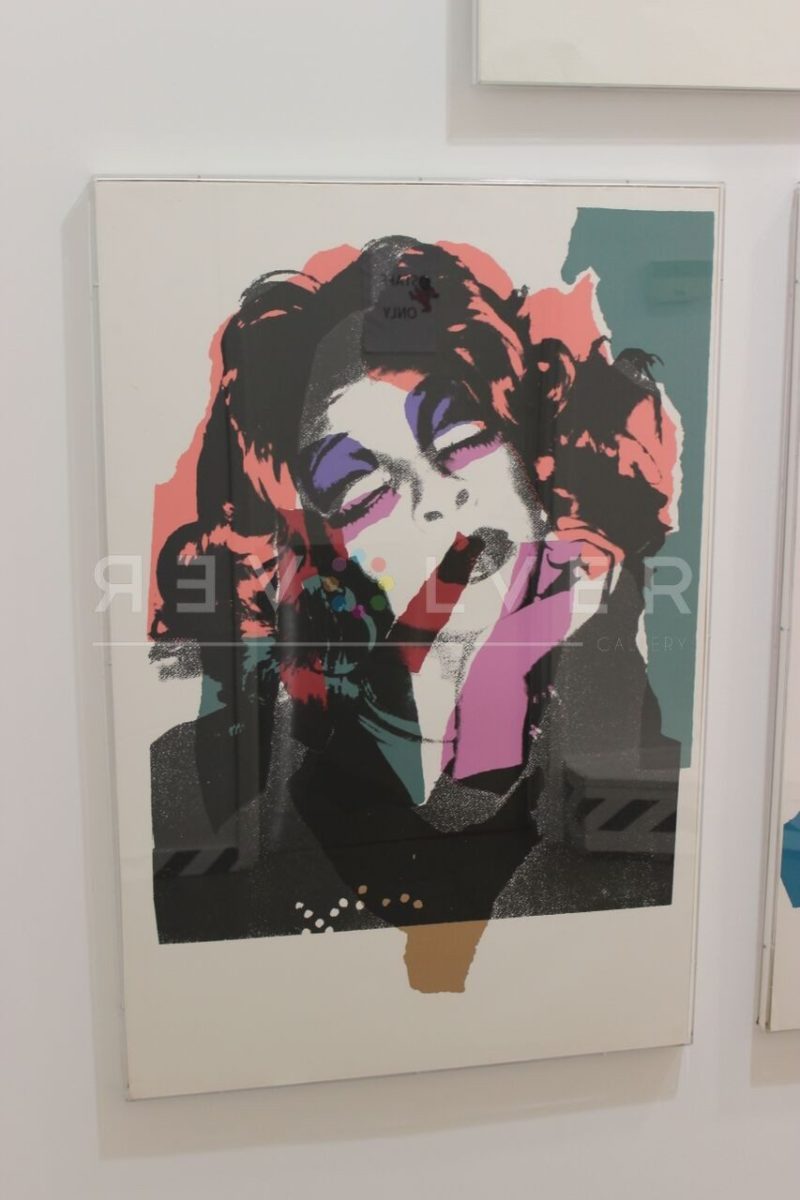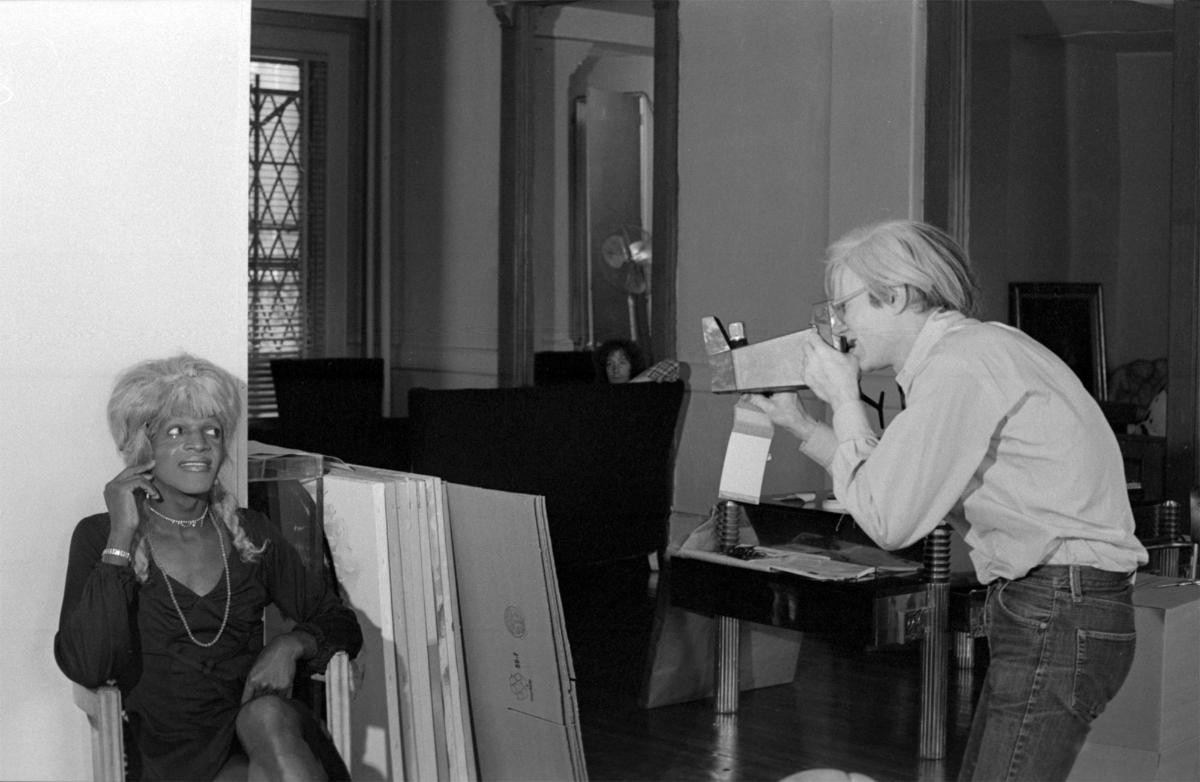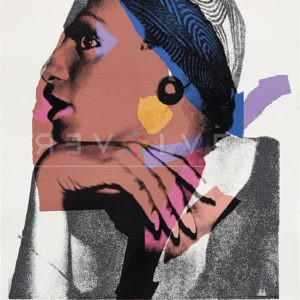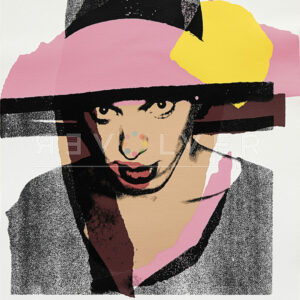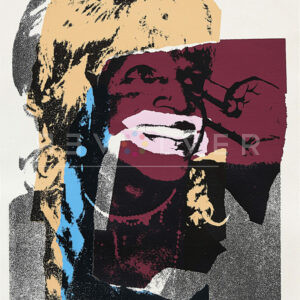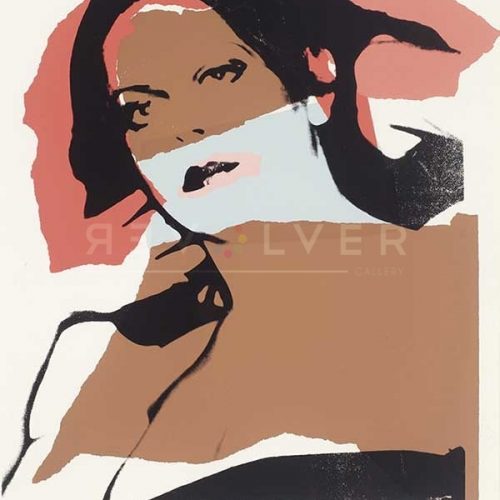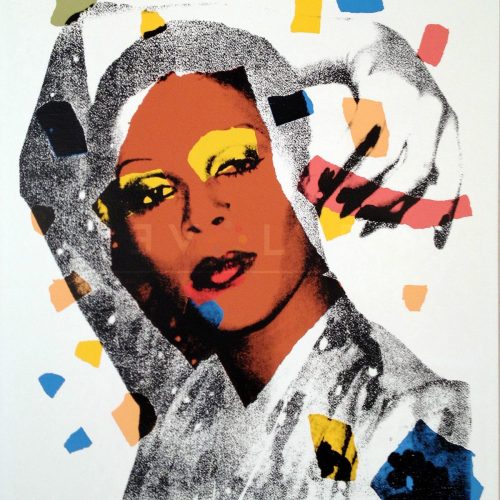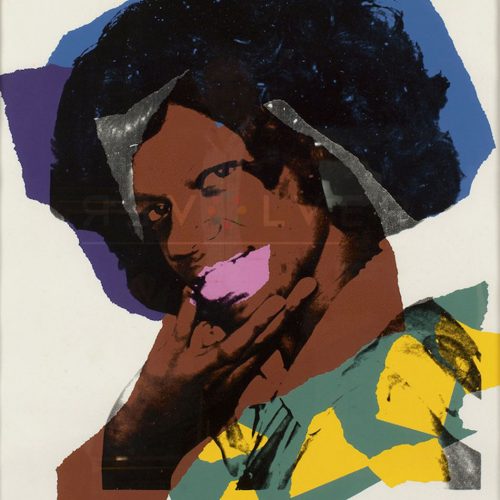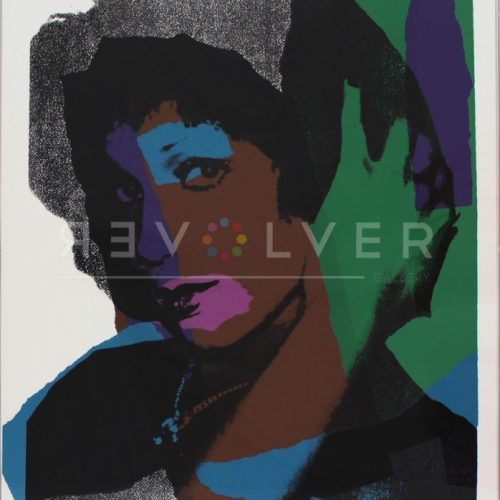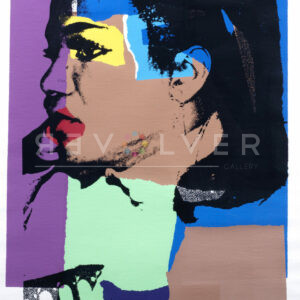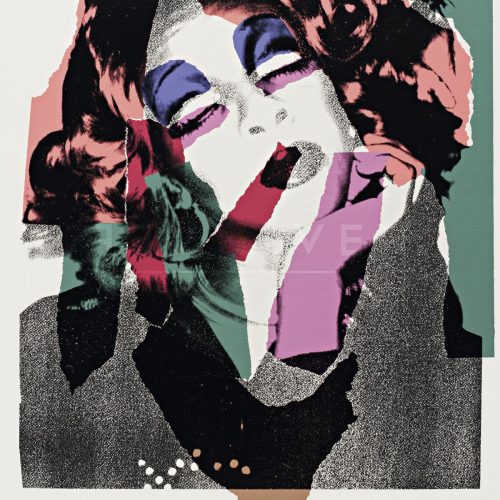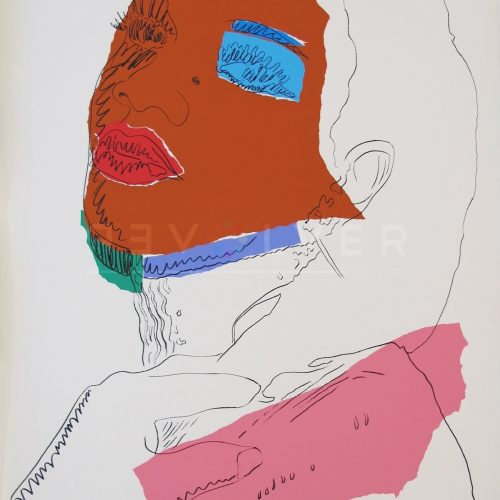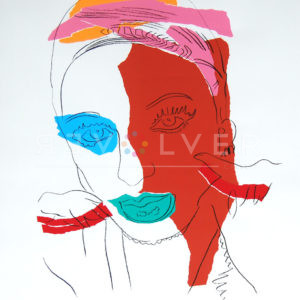The Ladies and Gentlemen complete portfolio by Andy Warhol consists of ten screen printed portraits of Black and Latinx drag queens and trans-women. Italian art dealer Luciano Anselmino commissioned the portfolio, suggesting that Warhol create a series of “impersonal, anonymous” portraits of drag queens and trans-women. A nod to the theatrics of drag shows, Anselmino supplied the title, “Ladies and Gentlemen.” The Ladies and Gentlemen portfolio is one of Warhol’s most unique works, although it employs many of his trademark methods.
Warhol’s colleague and Interview magazine editor Bob Colacello scouted many of the models from a nearby club called The Gilded Grape. Located on 8th Avenue in Manhattan, the bar became a popular establishment with local Black and Latinx trans-women and drag queens. It was also close to Warhol’s studio, The Factory, where the photo shoots for the series took place.
Rather than using what he termed “readymades,” Warhol took hundreds of Polaroids of the fourteen drag queens and trans-women that Colacello recruited. This series is one of the earliest instances in which Warhol developed his own source images: instant photos from his trusty Polaroid camera. This process and his famed Polaroid camera later became integral to his artistic practice. (Warhol is known for using the Polaroid Big Shot, and the SX-70.)
Out of the hundreds of photos, Warhol carefully selected which ones he would use for the ten prints that make up the Ladies and Gentlemen complete portfolio. He used many of the photos not included in this portfolio for other series. He then enlarged the portraits, screen printed them, and added his signature color block details.
The Ladies and Gentlemen complete portfolio contains portraits of eight of the fourteen models. Many of the sitters were unknown until 2014 when the Andy Warhol Foundation uncovered the names of thirteen of the fourteen models. In the initial photo shoots, Warhol asked that the sitters remain anonymous. They were compensated $50 each for their participation in the photo shoots, and many never saw the finished portraits.
This particular suite features portraits of Easha McCleary (128), Alphanso Panell (129), Wilhelmina Ross (130, 136), Iris (surname unknown; 131, 135), Monique (surname unknown; 132), Marsha P. Johnson (133), Vicki Peters (134), and Broadway (surname unknown; 137). Among these names, Marsha P. Johnson is the most well-known, largely due to her activism and advocacy for gay and trans rights. Johnson was a vanguard participant in the Stonewall Uprising, and a co-founder of the radical activist organization S.T.A.R. (Street Transvestite Action Revolutionaries). There is little known of many of these sitters beyond the signatures on a few Polaroids and the likenesses captured in these portraits.
Although Anselmino commissioned the project, Warhol’s realization of Ladies and Gentlemen went far beyond Anselmino’s suggestions. The title Anselmino proposed, however, stuck. It proved even more fitting as Warhol leaned into the vibrant personalities of his models and explored the way that they navigated and performed gender, which Warhol highlighted with color-block accentuations.
The series is sometimes compared to Warhol’s 1985 Reigning Queens series. Athough the sitters of Ladies and Gentlemen are not royalty—in many cases, in fact, they lived in relative poverty—they are portrayed in the same style as the monarchs of the later series with the same grace and elegance. The hardships that these drag queens and trans-women faced in real life were rendered invisible by the glamour Warhol’s vision granted all of his subjects.
In the world created by this portfolio, all of Warhol’s sitters appear as larger-than-life characters. The sitters are not “real” people, but appear instead as posed and apart from the worries of the mundane. Though the ethics of the series have rightly been called into question, there is something striking about the way that Warhol elevates his subjects to the position of the cultural icons of their time with the Ladies and Gentlemen complete portfolio.
LADIES AND GENTLEMEN AS PART OF ANDY WARHOL’S LARGER BODY OF WORK
The Ladies and Gentlemen complete portfolio is comprised of portraits of drag queens from a New York City nightclub called The Gilded Grape. Warhol took their portraits with a Polaroid Big Shot camera and then transferred the image onto silk screen. This was the same process he used on celebrities and other famous figures. Warhol told the models to dress and pose however they wished. None of the subjects are famous but Warhol brings out the style and glamour in each portrait. The idea for the Ladies and Gentlemen series came from a protégé of art dealer Alexander Iolas named Luciano Anselmino. Anselmino had previously commissioned Warhol to do an edition of one hundred prints of Warhol’s Man Ray portrait. When Warhol went to Torino to sign the prints, Anselmino suggested he do a series of drag queens. Warhol took his advice and used models found at the The Gilded Grape on West 45th Street, frequented by Black and Hispanic members of the transgender community.

